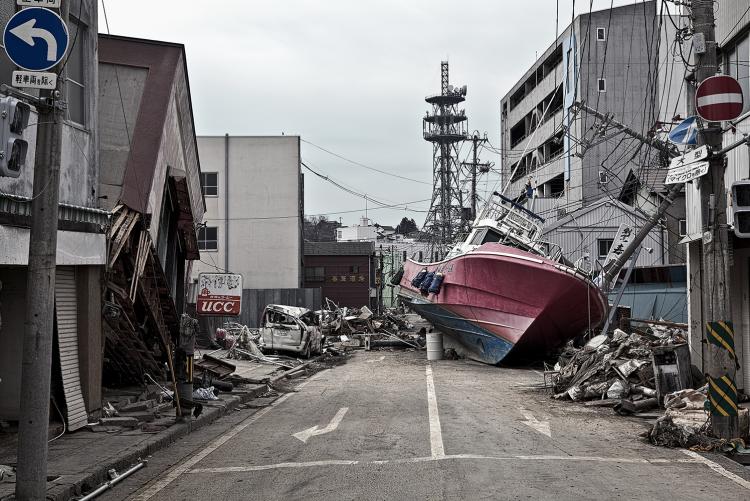On a Friday afternoon in the spring of 2011, the largest earthquake in Japan’s recorded history triggered a tsunami that crashed through seawalls, flattened coastal communities and pummeled the Fukushima Daiichi nuclear power plant.
Damage from the earthquake and tsunami. (Image credit: Shutterstock)
More than 19,000 people died and tens of thousands more fled as radiation belched from the world’s worst nuclear accident since Chernobyl.
A decade later, large swaths of land remain contaminated and emptied of most of their former residents. The deadly natural disasters of March 11, 2011, and the catastrophic nuclear meltdown that followed have left a lasting impact on earthquake science, tsunami defense and the politics of nuclear power.
Here, Stanford nuclear security expert Rod Ewing and geophysicists Eric Dunham and Jenny Suckale discuss that legacy, as well as how scientists are continuing to discover new details about the disaster.
What lessons did the damage from Tohoku provide about preparing for tsunamis?
SUCKALE: The Tohoku tsunami highlighted that even a highly sophisticated and expensive tsunami mitigation system can fail. There has also been increasing interest in alternative approaches to mitigating tsunami risks such as nature-based or hybrid approaches. We need to learn a lot more about these types of approaches, but it’s exciting to see progress in that area. It might not be coincidental that a lot of that thinking comes from Miyagi Prefecture, which was hard hit by the tsunami.
- Log in to post comments
Comments
Compellingly recaptiualize enterprise-wide web-readiness
Appropriately communicate adaptive imperatives rather than value-added potentialities. Conveniently harness frictionless outsourcing whereas state of the art interfaces. Quickly enable prospective technology rather than open-source technologies.

















